Student Notable
Interaction Award
Core77 Design Awards 2023
SwellSense: Creating 2.5D interactions with micro-capsule paper
Our living environments are always patterned or textured. 2.5D structures, from rough surface textures to more explicitly-designed patterns, are ubiquitous and are interwoven with 2D planar surfaces. These 2.5D textures assist human perception, enabling us to feel, understand, and discover additional environmental information.
Recognizing the importance of 2.5D structures, researchers have tried to reproduce or even invent new surface textures to help with human perception. Creating textures faces challenges of expensive and slow fabrication machines e.g., using high-resolution 3D printers or requiring special 2.5D pattern printers (e.g., Casio Mofrel 2.5D printer). Also, most of the existing work focused on creating different forms of the 2.5D textures, while less attention is spent on enabling sensing in these fabricated textures to support interaction with the surfaces. Our work, therefore, aims to provide a highly-customizable approach to rapidly fabricate 2.5D surface structures with integrated sensing capabilities.
SwellSense aims to bridge this gap and our approach makes use of an existing, special micro-capsule paper that expands locally on its surface when heated. By screen printing a stretchable conductive silver ink (the primary ink) and carbon ink (the supplementary ink) on the micro-capsule paper, we achieve both the heater to trigger the localized material swelling as well as the sensor to capture input signals as a user slides their finger over the textured surface. The interactive capabilities of SwellSense can provide assistance for visually impaired individuals, enabling audio augmentation through tactile interaction. It also opens up new design space to create various physical interfaces with informative and expressive tactile features.
 Swelled numbers
We showcase we can create swelled numbers with inherent sensing capability.
Swelled numbers
We showcase we can create swelled numbers with inherent sensing capability.
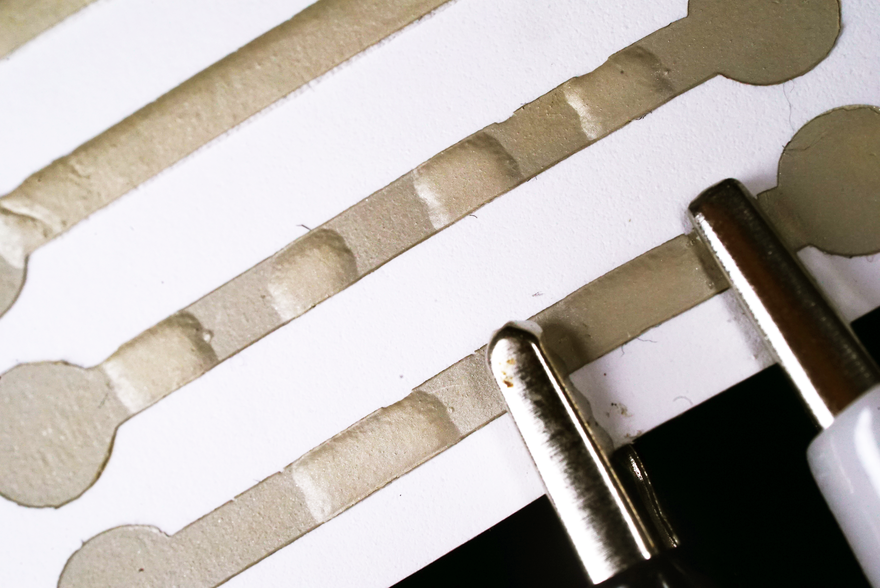 Selective manual swelling
We showcase we can manually choose where to swell up.
Selective manual swelling
We showcase we can manually choose where to swell up.
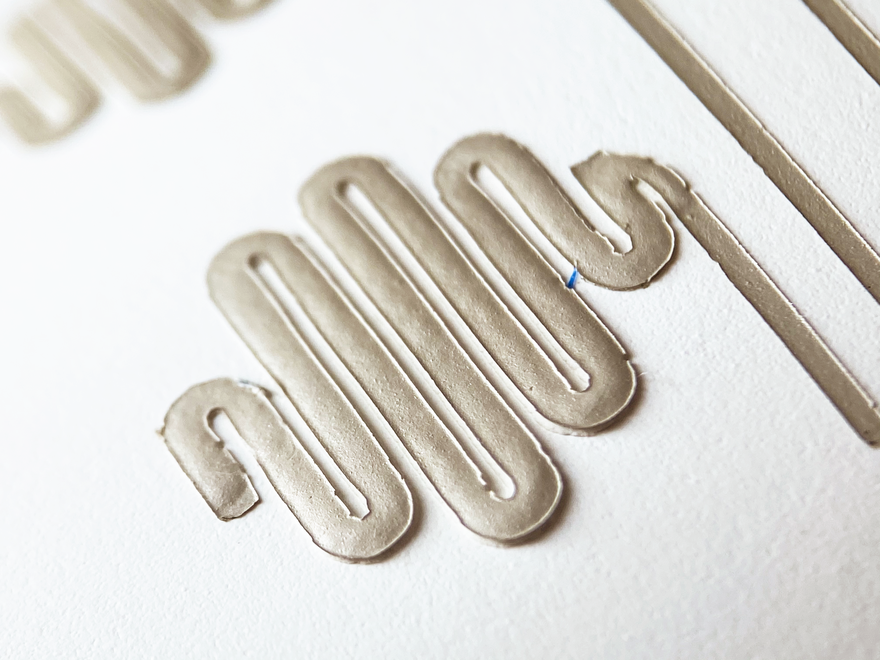 Swelled density pattern.
We showcase we can create density pattern with inherent sensing capability.
Swelled density pattern.
We showcase we can create density pattern with inherent sensing capability.
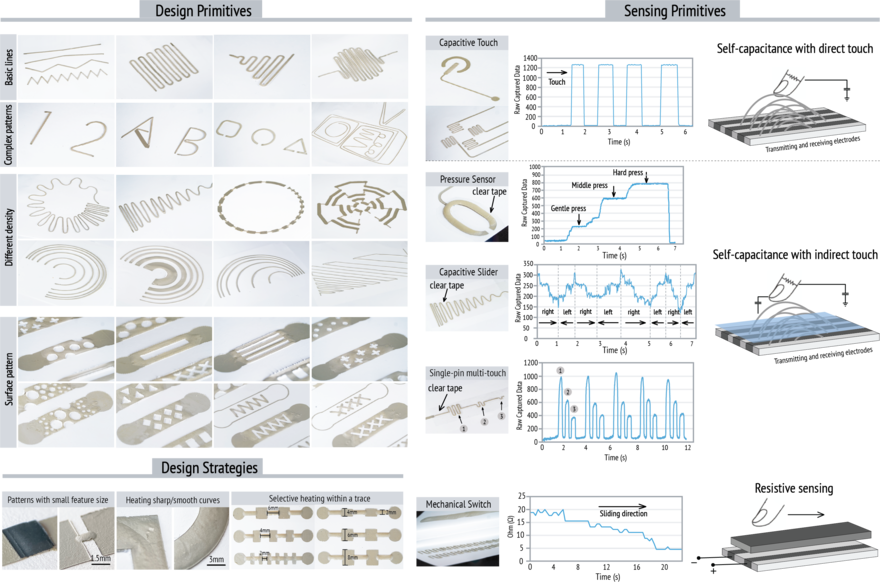 Design space for swelling and sensing
We introduce a wide range of swelling pattern as our design primitives as well as different sensing modalities enabled by SwellSense.
Design space for swelling and sensing
We introduce a wide range of swelling pattern as our design primitives as well as different sensing modalities enabled by SwellSense.
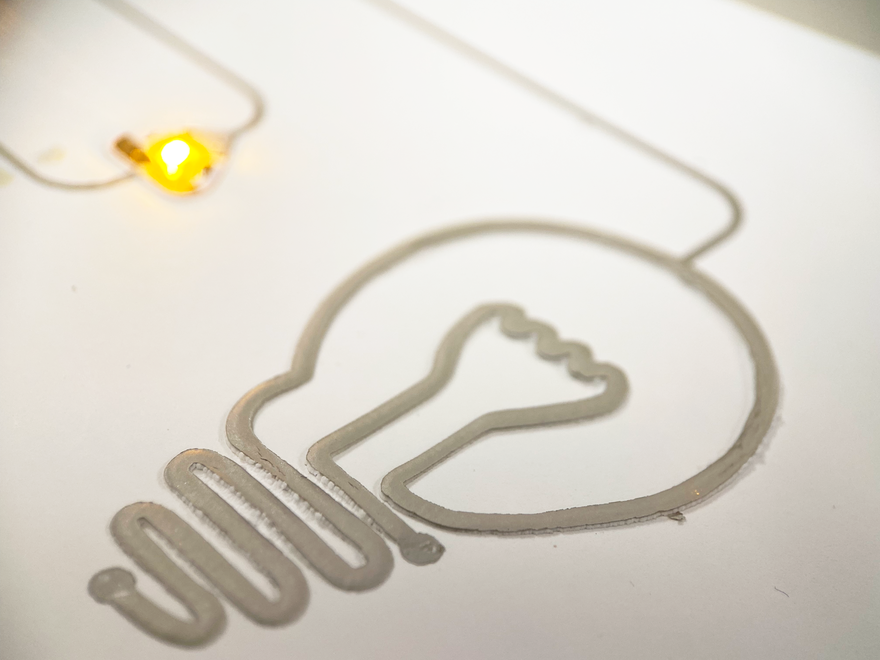 Interactive swelled LED
We showcase a simple demo that one can create a bulb-shaped pattern as a trigger for LED.
Interactive swelled LED
We showcase a simple demo that one can create a bulb-shaped pattern as a trigger for LED.
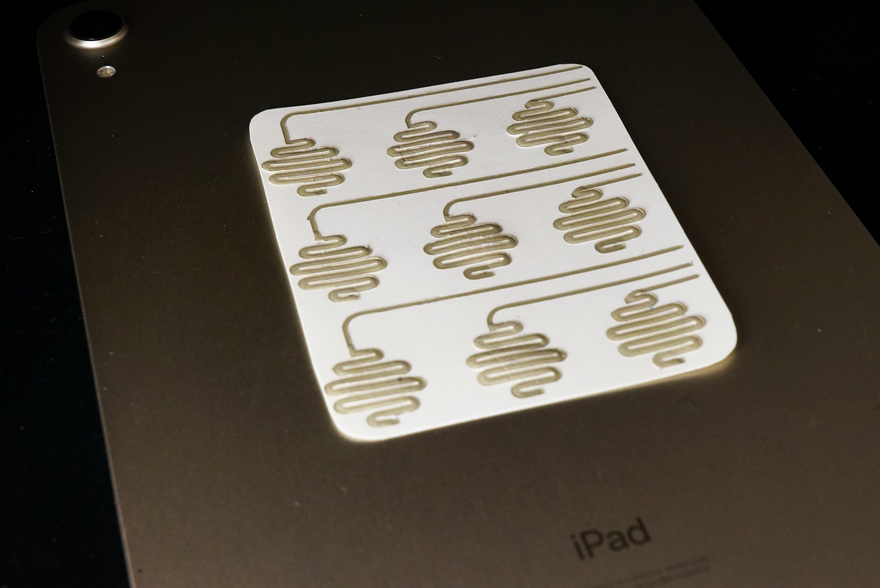 Touchable pad on the back of an IPAD
We showcase we can create multiple touchable pattens to augment the visually hidden areas for our mobile devices.
Touchable pad on the back of an IPAD
We showcase we can create multiple touchable pattens to augment the visually hidden areas for our mobile devices.
 Making interactive braille
We showcase the fabrication process for make interactive braille.
Making interactive braille
We showcase the fabrication process for make interactive braille.
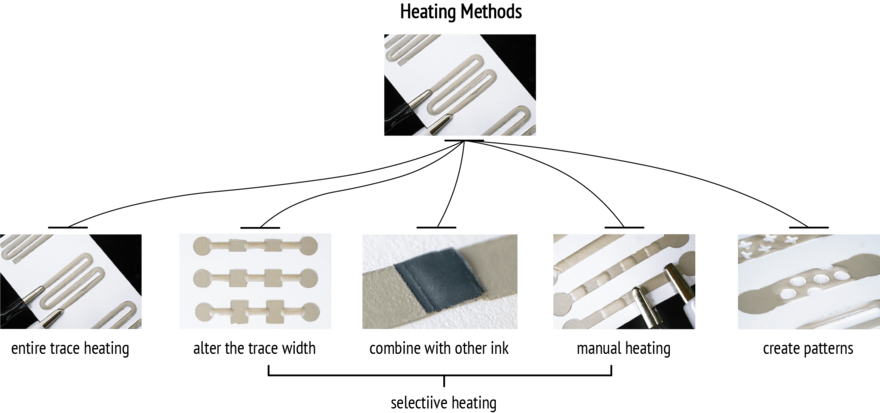 Different heating approaches
We investigated that we can directly heat up the entire trace for uniform swelling or selectively create local swell.
Different heating approaches
We investigated that we can directly heat up the entire trace for uniform swelling or selectively create local swell.
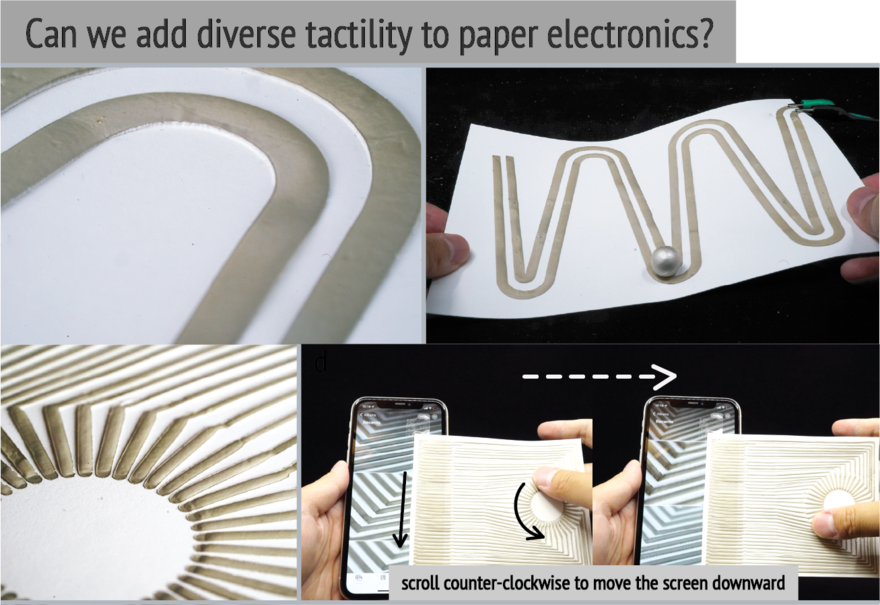 Adding tactility to paper electronics
We showcase how we can add tactile features to paper electronics which are usually interactive but completely flat.
Adding tactility to paper electronics
We showcase how we can add tactile features to paper electronics which are usually interactive but completely flat.
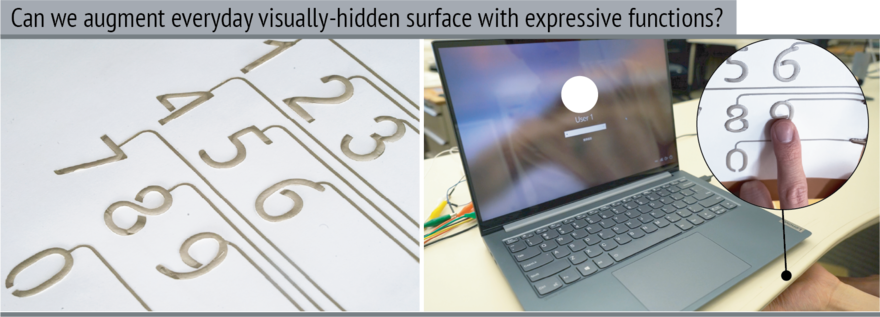 Augmentation of visually-hidden everyday surfaces
We created the nine numbers to augment the bottom of the table, so when people would like to unlock the desktop, they can directly use the patterns without letting others to oversee their passcode.
Augmentation of visually-hidden everyday surfaces
We created the nine numbers to augment the bottom of the table, so when people would like to unlock the desktop, they can directly use the patterns without letting others to oversee their passcode.
 Adding sensing capability to tactile graphics.
We showcase how to use SwellSense to add audio clarification for tactile graphics or braille to let visually-impaired people to self-learn the meaning or tactile graphics/braille patterns.
Adding sensing capability to tactile graphics.
We showcase how to use SwellSense to add audio clarification for tactile graphics or braille to let visually-impaired people to self-learn the meaning or tactile graphics/braille patterns.
 Repetitive surface pattern
We investigate how SwellSense can also crease different surface patterns.
Repetitive surface pattern
We investigate how SwellSense can also crease different surface patterns.
SwellSense is a fabrication technique to screen print stretchable circuits onto a special micro-capsule paper, creating localized swelling patterns with sensing capabilities. This simple technique will allow users to create a wide range of paper-based tactile interactive devices, which are mostly maintaining 2D planar form factor but can also be curved or folded into 3D interactive artifacts. In this project, we first present the design guidelines to support various tactile interaction design including basic tactile graphic geometries, patterns with directional density, or finer interactive textures with embedded sensing such as touch sensor, pressure sensor, and mechanical switch. We then provide a design editor to enable users to design more creatively using the SwellSense technique. Lastly, we demonstrate several application examples and conclude with a discussion on current limitations and future work.
This project is primarily built on the commercially available Swell Touch Paper, also known as micro-capsule paper. This paper is heat sensitive, consisting of a heat-triggered micro-capsule layer on top of a paper backing. Black ink with carbon pigment is typically printed on the paper. When the paper slides through a heat fuser, the black ink will absorb the heat and cause the micro-capsule surface to rise up according to the drawing. In this way, printed images, such as braille dots become raised and tactile. SwellSense introduces a new way of printing stretchable conductive inks directly on swell paper. The conductive inks will serve to directly heat the micro-capsule paper and support sensing along the surface. The overall goal for SwellSense has two folds: 1) to add the sensing capability to conventional tactile graphics/braille, and 2) to add tactile feedback to non-tactile interactive devices (e.g., paper electronics). The thin sheet form factor together with the stretchable conductive ink enables SwellSense with unique properties including highly fold-able that can be constructed into 3D structures, diverse sensing capabilities (e.g., direct/indirect capacitive sensing, contact-based resistive sensing), and meanwhile SwellSense supports real-time swelling effect.
Core77 Design Awards 2023
- A/V & Photography Equipment
- Apps & Platforms
- Branding & Identity
- Built Environment
- Commercial Equipment
- Consumer Technology
- Design for Social Impact
- Emerging Technologies
- Furniture & Lighting
- Gaming Accessories
- Health & Wellness
- Home & Living
- Interaction
- Lifestyle Accessories
- Packaging
- Robotics
- Speculative Design
- Sports & Outdoors
- Sustainability
- Tools
- Toys & Play
- Transportation
- Visual Communication